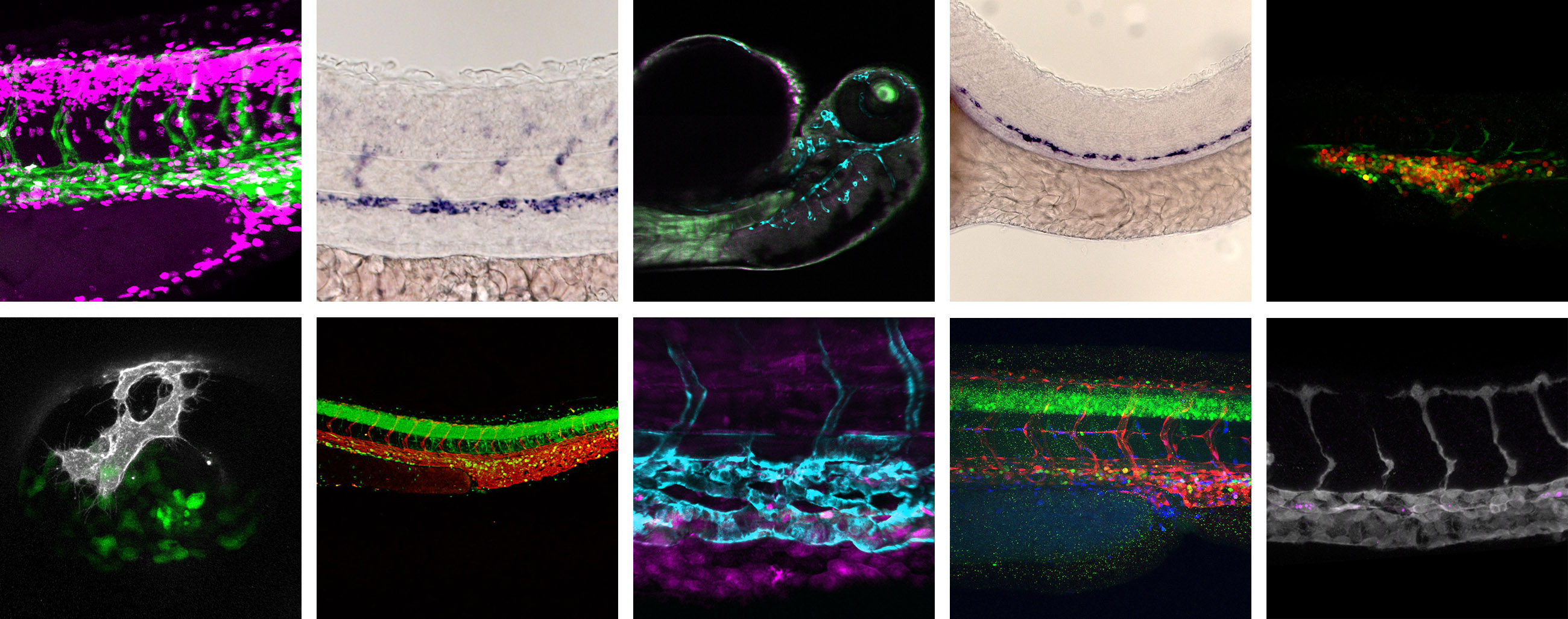The Trista North Lab focuses on developmental hematopoiesis as a key to uncovering general principles of stem cell function, self-renewal and tissue regeneration.

Hematopoietic stem cells (HSCs) give rise to each of the blood cell lineages present during a vertebrate’s lifetime. Gene programs and signaling networks regulating HSC development and function are highly evolutionarily conserved, with dysregulation resulting in hematologic disorders and malignancies. HSCs are therapeutically valuable for the treatment of hematologic disease, but are in limited supply in the donor pool and currently cannot be effectively expanded or produced de novo in cell culture. My laboratory combines genetic methods and chemical biology approaches in the zebrafish embryo with cutting-edge transcriptomics and high-resolution microscopy to identify and characterize pathways regulating HSC induction, expansion and differentiation in vivo. To examine regulatory conservation and translational application, we employ ex vivo murine tissue explant studies, human induced pluripotent stem cell in vitro hematopoietic culture methodologies, and in vivo functional analyses, including injury/recovery models and HSC transplantation/xenotransplantation assays in adult zebrafish and mice.
My early work in the Hematology and Stem Cell Biology fields revealed the essential functional requirement for Runx1 in definitive HSC formation in the mouse embryo. Runx1 is now considered the definitive marker of HSC specification during vertebrate embryogenesis, required for the transition from an endothelial to hematopoietic state which initiates life-long hematopoiesis. As a postdoc, via an innovative unbiased in vivo bioactive chemical screening approach in zebrafish, I discovered several novel regulatory pathways impacting HSC production across vertebrates. This methodology led to the first example of FDA approval for the investigational use of a compound identified in zebrafish [Prostaglandin E2 (PGE2)] for clinical application in the treatment of human disease. Since founding my independent lab at Harvard Medical School in 2008, we uncovered a series of extrinsic or environmental cues that influence the spatio-temporal development, expansion and maintenance of HSC production (see Publications), which has translational relevance for the de novo production and maintenance of HSCs in culture for clinical application.
Current and former trainees in the North lab have effectively competed for independent funding (NIH, NSF, CIHR), and been selected for oral presentations and/or awards at regional, national and international conferences. Following publication of their independent and collaborative research projects, North lab members have transitioned successfully into research, medical and/or science-adjacent careers including postdoctoral studies, and principal investigator and scientist positions in academia and industry (see Alumni profiles). North lab trainees participate in weekly lab meetings, zebrafish group meetings, and 1:1 PI conferences, including an annual career mentorship meeting. They also present their work to the larger Stem Cell Program and Boston Children's Hematology/Oncology community annually. Lab members receive both classroom and online training in laboratory safety, animal husbandry and responsible research conduct. All North lab PhD trainees have graduated in 5 years, with at least one first author publication. Additionally, all visiting (summer) and Harvard-affiliated undergraduates and research technicians in the North lab have transitioned on to graduate and/or medical school.
Resources